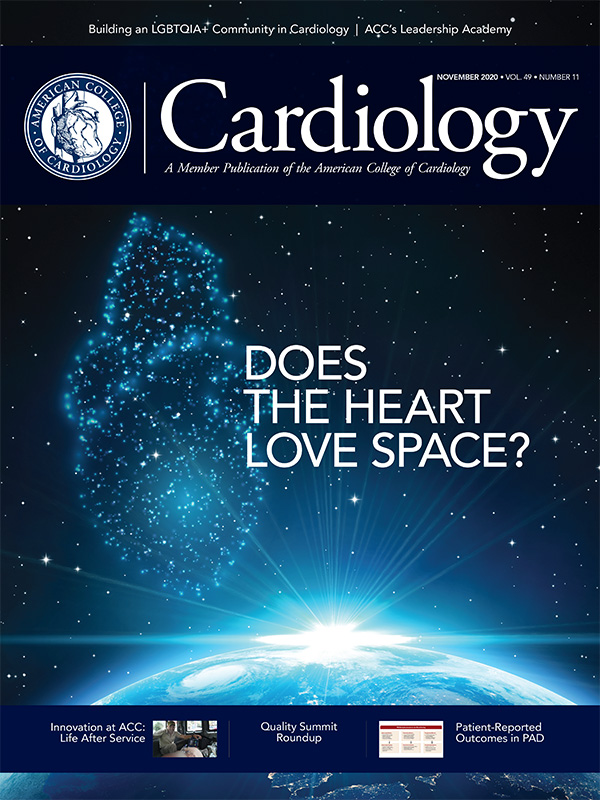Cover Story | Does the Heart Love Space?
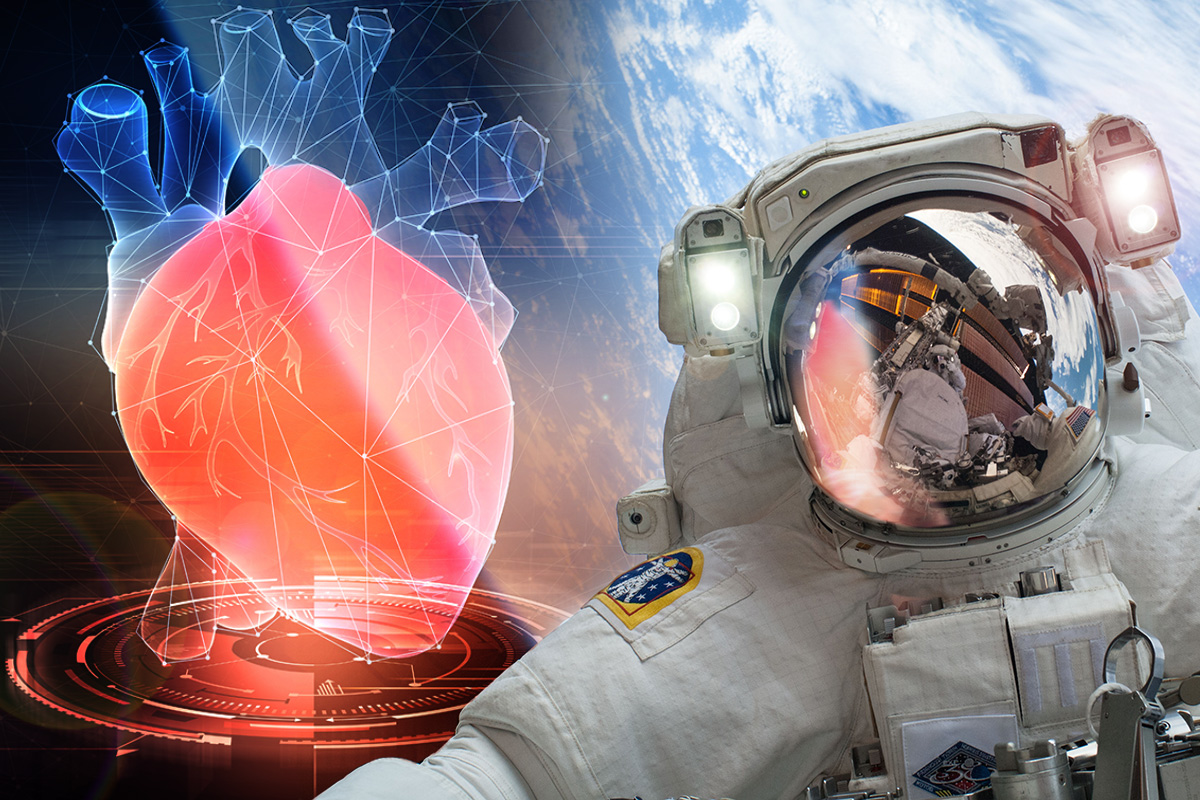 NASA
NASA
Is space travel bad for the heart? What happens to hemodynamics in microgravity? Does living in outer space age the heart prematurely? How much time in space is too much time? And how deep in space is too deep?
These are all questions that have been considered as we explore the world beyond planet Earth and spend progressively longer periods in near and deep space.
This month, Cardiology reviews the data and speaks to expert "space cardiologists" to summarize our current understanding of the impact of space travel on the heart.
CV Effects of Space
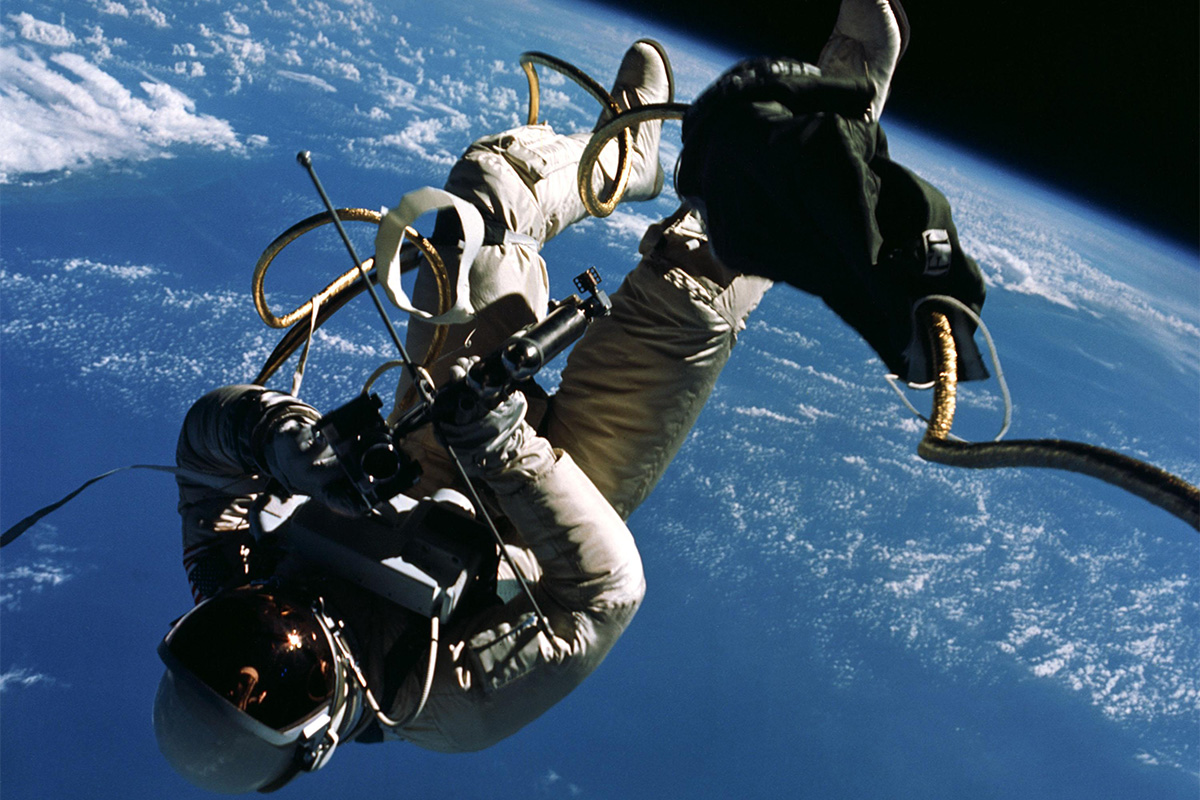 NASA
NASA
Space does some weird stuff to human physiology. For example, the sense of thirst is "almost nonexistent," according to the late physician Laurel Clark, who died in the 2003 Space Shuttle Columbia disaster. There are also some unusual one-off reports, like a case report of an astronaut with elevated blood pressure after inhalation of moon dust.1
Despite these anecdotal reports, over many years of study researchers have determined that, for the most part, space is a safe place cardiovascular-wise, despite some clear impacts of microgravity and space radiation.
For starters, microgravity changes the shape of the heart to a more spherical shape. This happens fairly quickly – after just two weeks in microgravity, a 9.4% reduction in sphericity was noted in 12 astronauts aboard the International Space Station (ISS) compared with their earthly hearts.2
Because the normal head-to-foot hydrostatic gradient is removed in microgravity, mean arterial pressure is uniform throughout the body and there is a persistent increase in central blood volume.
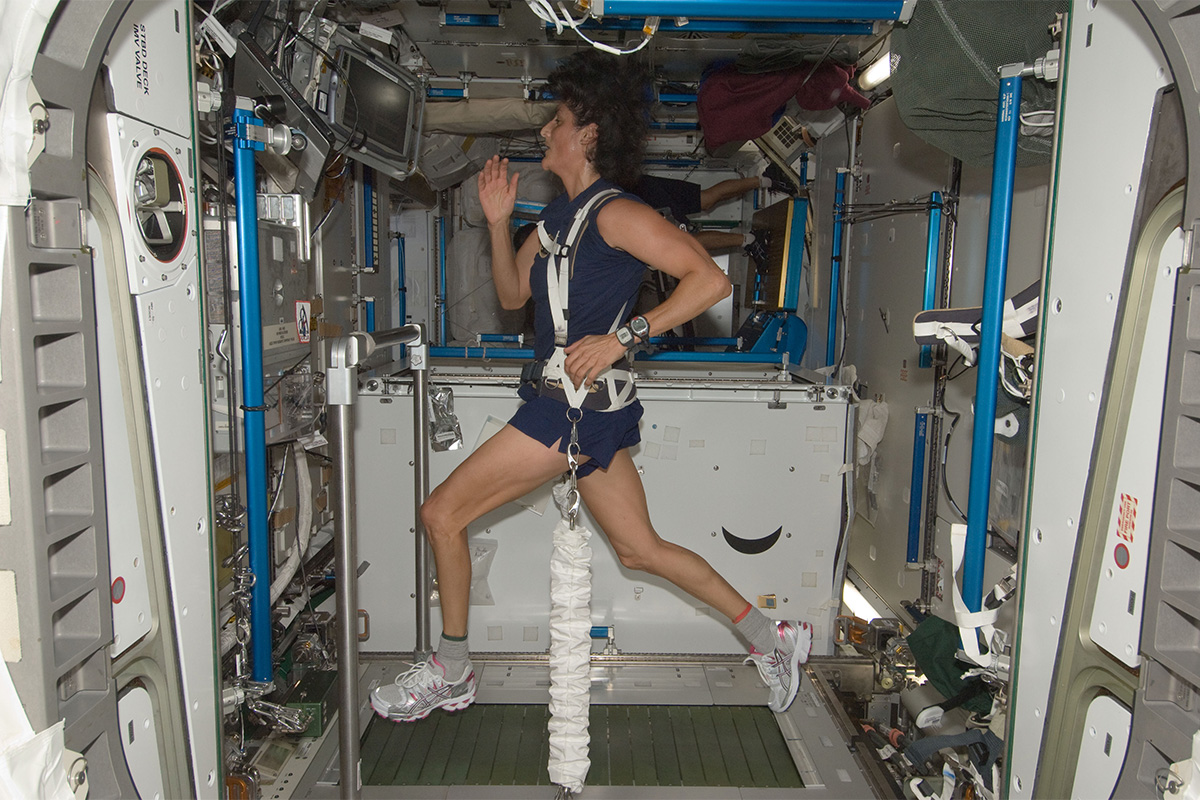 NASA
NASA
Astronauts who spent six months in space were found on cardiac magnetic resonance (CMR) imaging to have transient increases in left atrial volume that potentially increase the risk of atrial fibrillation (AFib), but with no definitive evidence of increased supraventricular arrhythmias and no identified episodes of AFib.3
"I'm not particularly concerned about changes in the sphericity of the heart. It's just a gravity effect that has no consequence. But it does seem that astronauts get AFib about a decade earlier than the population and this may be related to the atria getting bigger," says Benjamin D. Levine, MD, FACC, who was the senior author on the CMR study.
"You can't stand up in space, so atrial pressure is higher than it is in the upright posture, and a little lower than it is in the supine posture. Combined with the amount of exercise they must do to avoid muscle loss, it probably does drive some atrial dilation, says Levine. How this might play out during much longer missions requires further study.
To prevent cardiac atrophy, astronauts spend a fair amount of their time in space exercising. For some, this is more exercise than they get on Earth, which in one remarkable case led to physiologic hypertrophy, says Levine.
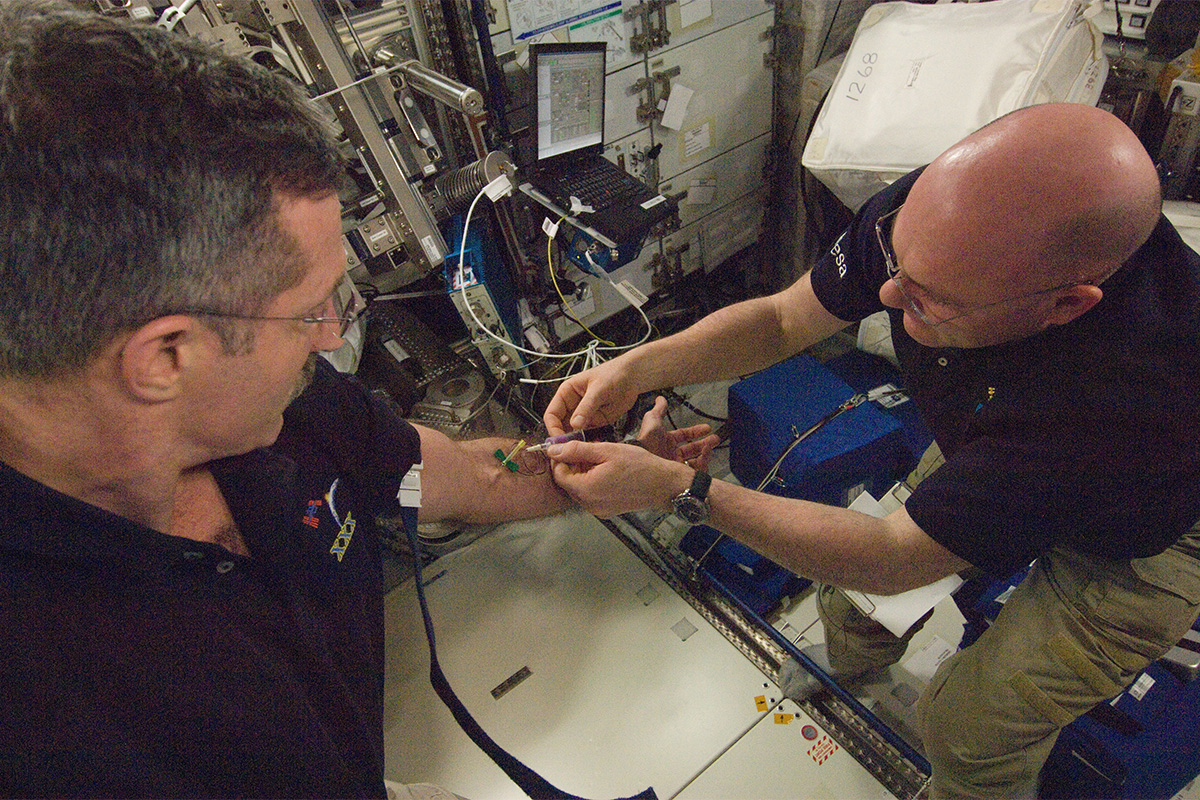 NASA
NASA
"There's no magic pixie dust in space causing the heart to shrink. We've actually quantified 24-hour cardiac work on the ground and in space. If work decreases, the heart gets smaller. If it increases, the heart gets bigger."
Levine is the nation's top cardiology consultant to the National Aeronautics and Space Administration (NASA), as well as the director of the Institute for Exercise and Environmental Medicine (IEEM) and Distinguished Professor in Exercise Science at the University of Texas Southwestern Medical Center at Dallas.
He is also an active member of the ACC's Sports and Exercise Cardiology Member Section and a consultant to the National Collegiate Athletic Association, National Football League, National Hockey League, the U.S. Olympic Committee and USA Track and Field.
"I've always been interested in the limits to human performance. When I was in college, I did my senior thesis on self-contained environmental systems, comparing Skylab to nuclear submarines. I was also a SCUBA diver and an NCAA athlete and I'm a mountain climber, so studying the effects of space travel on the heart is a good fit," says Levine.
CV (and Rest of Body) Effects of Space Radiation
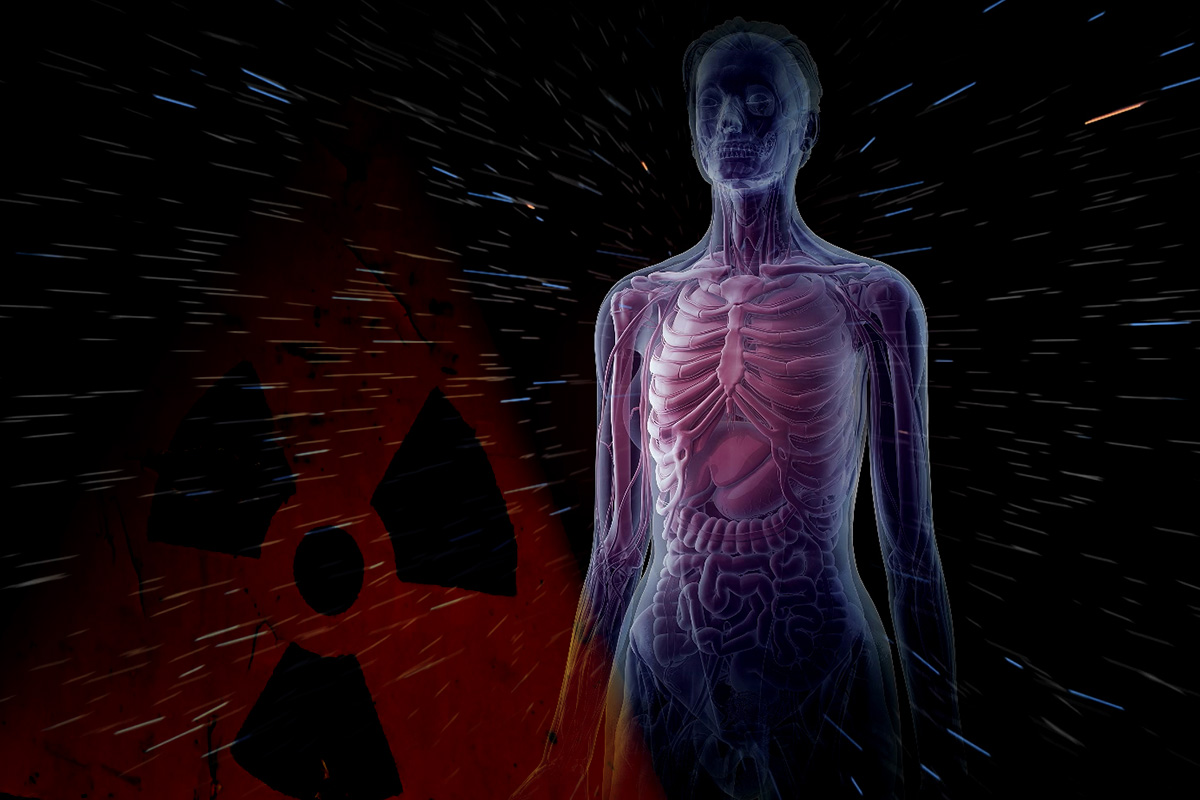 NASA
NASA
Besides microgravity, the other main risk of space travel is radiation exposure. "We have some sense that it accelerates progression of atherosclerosis, and at higher doses causes calcification in the vasculature and, of course, possibly cancer," says Matthew J. Budoff, MD, FACC, Endowed Chair of Preventive Cardiology at Lundquist Institute in Torrance, CA.
One issue is how deep into space we travel. International space agencies and private corporations are currently pursuing missions to the Moon, Mars and nearby asteroids.
In low Earth orbit (LEO), where the ISS sits, astronauts are beyond the Earth's protective atmosphere, but are still protected by the planet's magnetic field. Beyond LEO and the magnetosphere, the environment is harsher. Where the moon sits, at 384,400 km from Earth, galactic cosmic rays and solar particle events markedly increase exposure to ionizing radiation.
Spending six months on the ISS exposes astronauts to as much as 2,000 millisieverts of radiation. According to Budoff, practicing interventional cardiology exposes individuals to a range of 50 to 200 millisieverts cumulative dose per year.
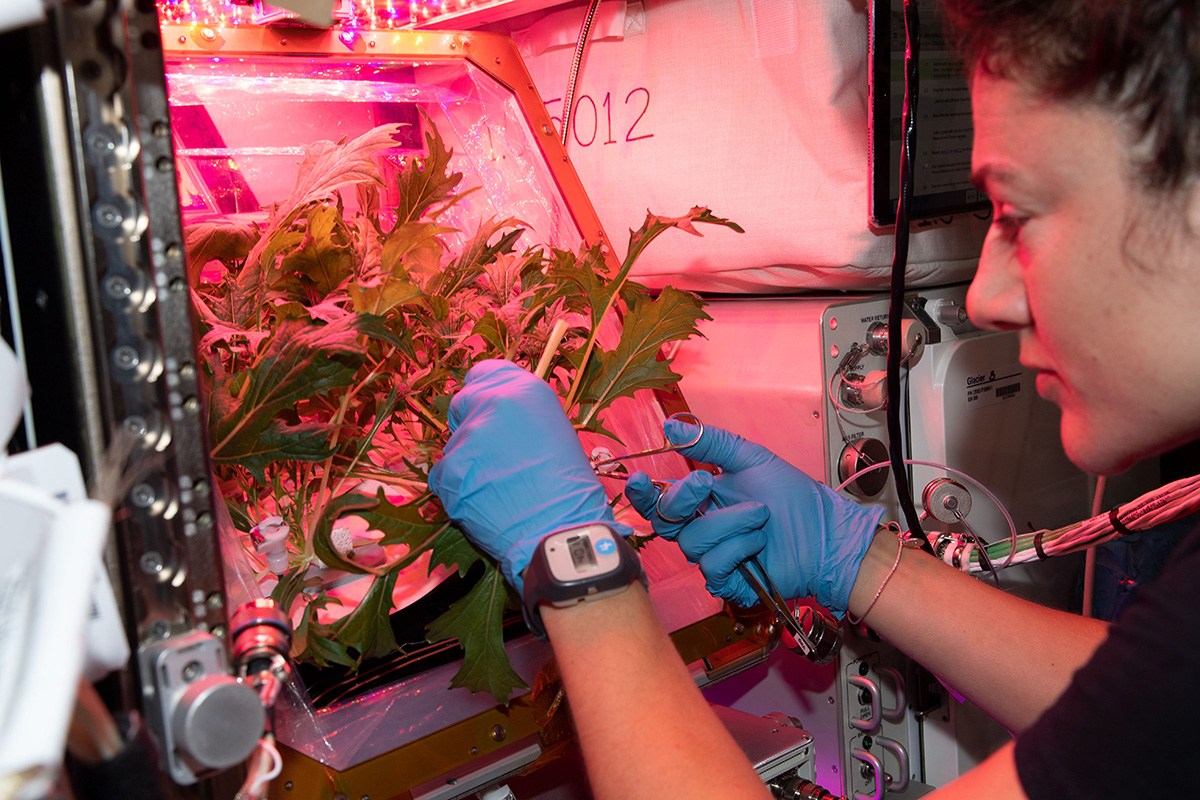 NASA
NASA
"So, it is at least ten-fold higher than we would be exposed to as cardiologists, happening in six months instead of over more than 10 years in the cath lab," says Budoff. At these levels, all bets are off in terms of not just cardiovascular disease, but also cancer, he notes.
"The exposure is going to be astronomically higher on a mission into deep space, and with less shielding because of practical considerations around the design of the spacecraft," he adds.
"If this higher level of exposure, say, accelerates heart disease, then we may see the short-term risk of events go up such that our calculations for whose safe to travel may need to be adjusted because we just can't send them up there with physicians of every specialty to help them if they get into trouble."
CV Screening of Astronauts (and Tourists)
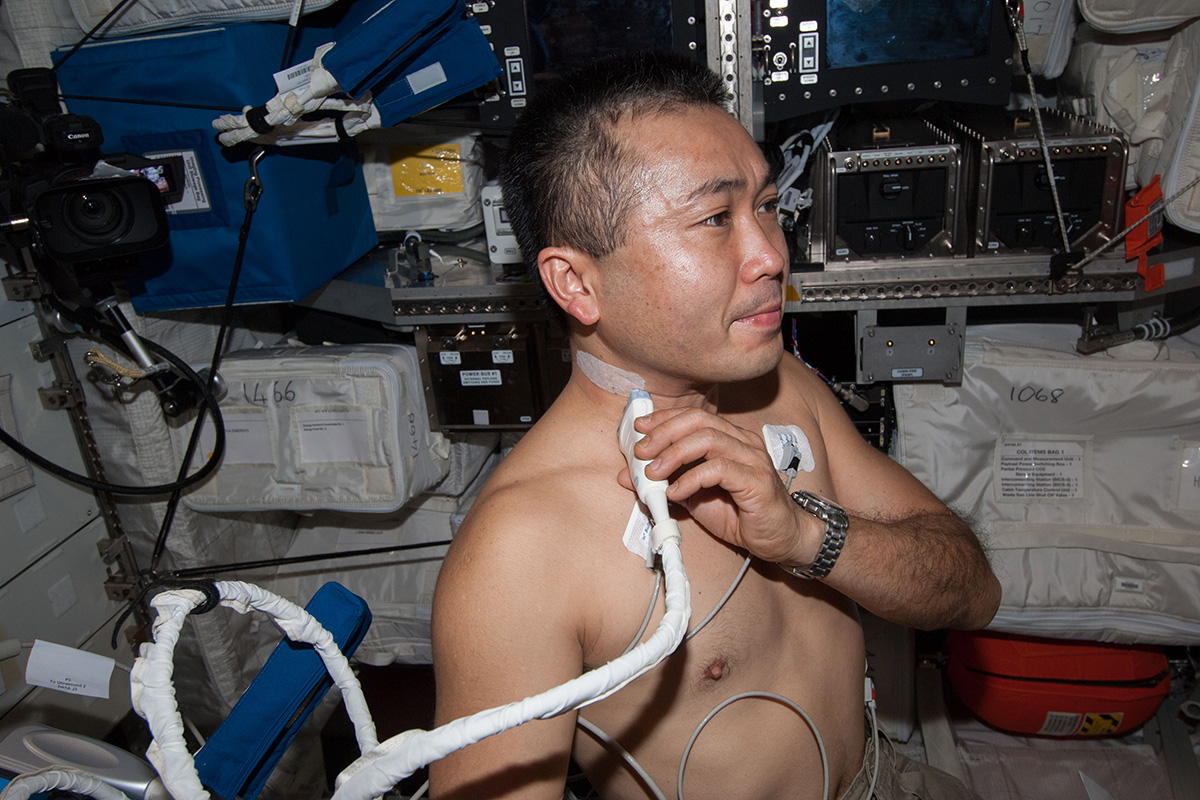 NASA
NASA
"Most astronauts are middle-aged men and women – the average age is about 45 – and while some of them are very fit, the vast majority are not especially athletic or fit. They are highly accomplished and skilled individuals, but not elite athletes by any stretch," says Levine.
What they are, however, is highly screened. That's where preventive cardiologist and CT imaging expert Budoff comes in.
"I help to clear astronauts and cosmonauts for travel. If there is an area of concern, I make recommendations for what those astronauts should do to either reduce their risk so they can safely travel to space, or if maybe they should not continue in the program," says Budoff in an interview.
While he doesn't make the final call, he says very few have actually been pushed out of the program because of health concerns. "If there is a way to adjust their risk, we do that because the last thing we want to do is spend millions training an astronaut and then have to bump them from flying because of their health," he adds.
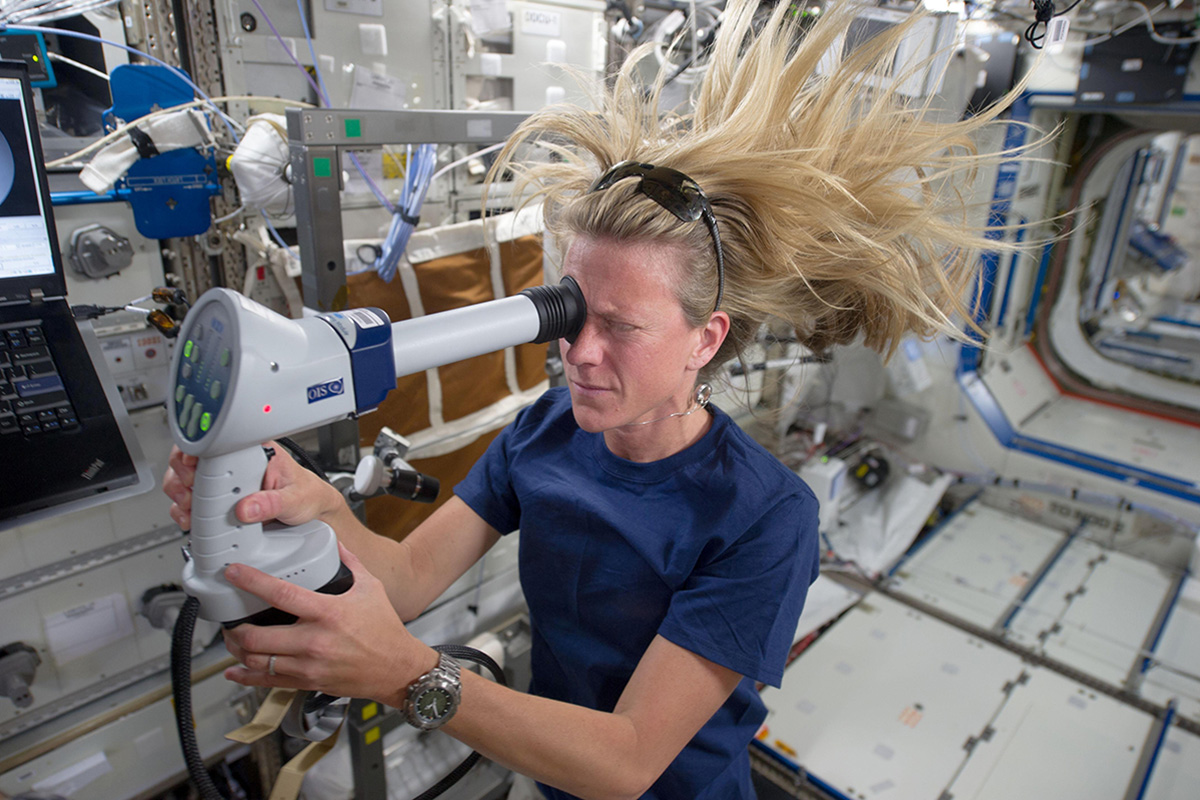 NASA
NASA
At Levine's urging, NASA instituted coronary artery calcium (CAC) screening for new astronaut candidates more than a decade ago and will not accept a candidate into the program if their CAC is >10.
Levine and Budoff were part of the group led by Amit Khera, MD, MSc, FACC, that developed the Astronaut Cardiovascular Health and Risk Modification (Astro-CHARM) Coronary Calcium Atherosclerotic Cardiovascular Disease Risk Calculator.4
Astro-CHARM incorporates risk factors, including high-sensitivity C-reactive protein and family history, and CAC data. According to Levine, NASA is willing to accept some risk, about 1% per year.
"So if they're up there for a year or two and you have a 1% risk, they are likely to do just fine," says Budoff. "If we can modulate that risk a little bit more, with baby aspirin or a statin or something like that, then we do it. But I have to say most of the astronauts have zero plaque and are at very low risk."
While this may be true, Levine notes that "a relatively large number, especially of older astronauts, do in fact have manifest CAC levels, as well as traditional risk factors such as hypertension or elevated cholesterol."
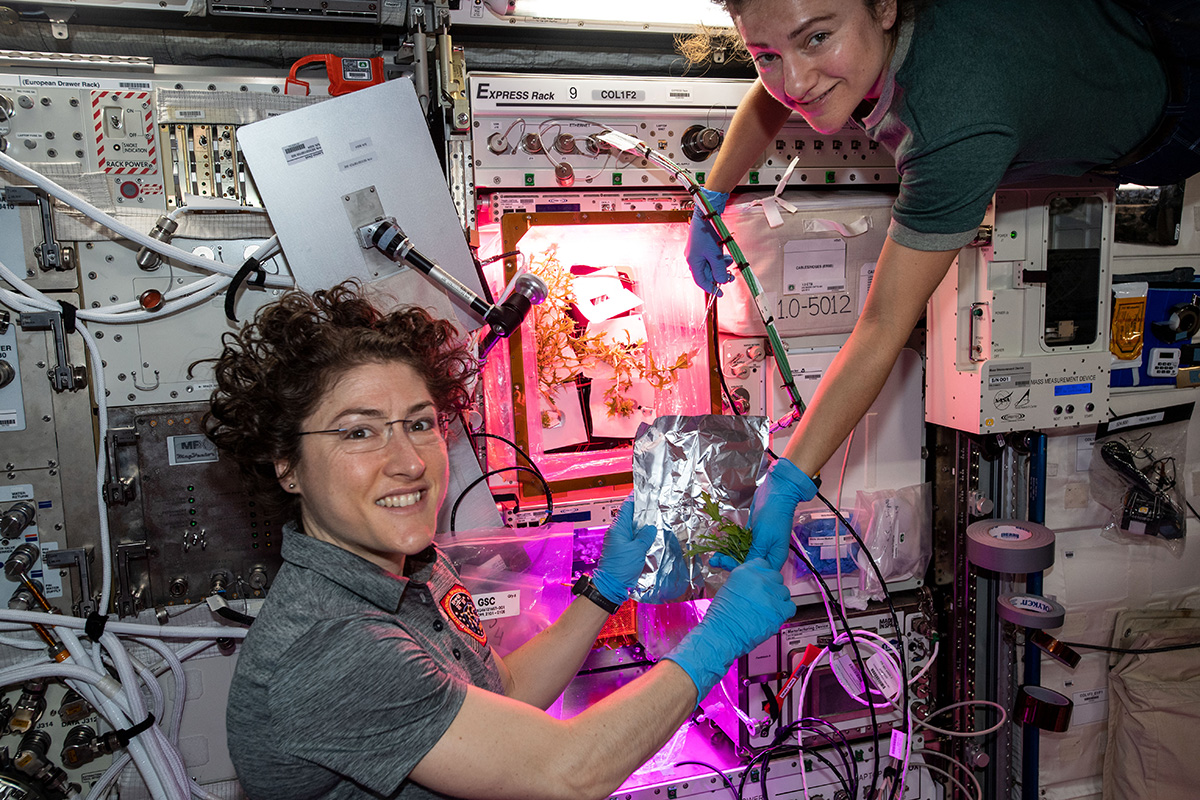 NASA
NASA
The risk model has worked well for relatively short-duration space flights – about six months is the current average duration. Still to be determined is how health stands up for longer voyages and what might happen when the "space tourists" start blasting off.
"Someone who pays a million dollars for a seat doesn't want to hear that they have a coronary calcium score of 1,000 and they can't go," says Levine.
"At some point, we may well send people who are less healthy than astronauts to space, but we're not going to send them any time soon for six-month trips. So, if you were a betting person, you would say that almost anybody would be at low risk for a two-week activity, whether that be on a cruise ship or a spaceship," Levine points out.
"It's important to keep in mind that the only people who have died in spaceflight is because of a catastrophic loss of the vehicle," he adds.
CV Care in Space
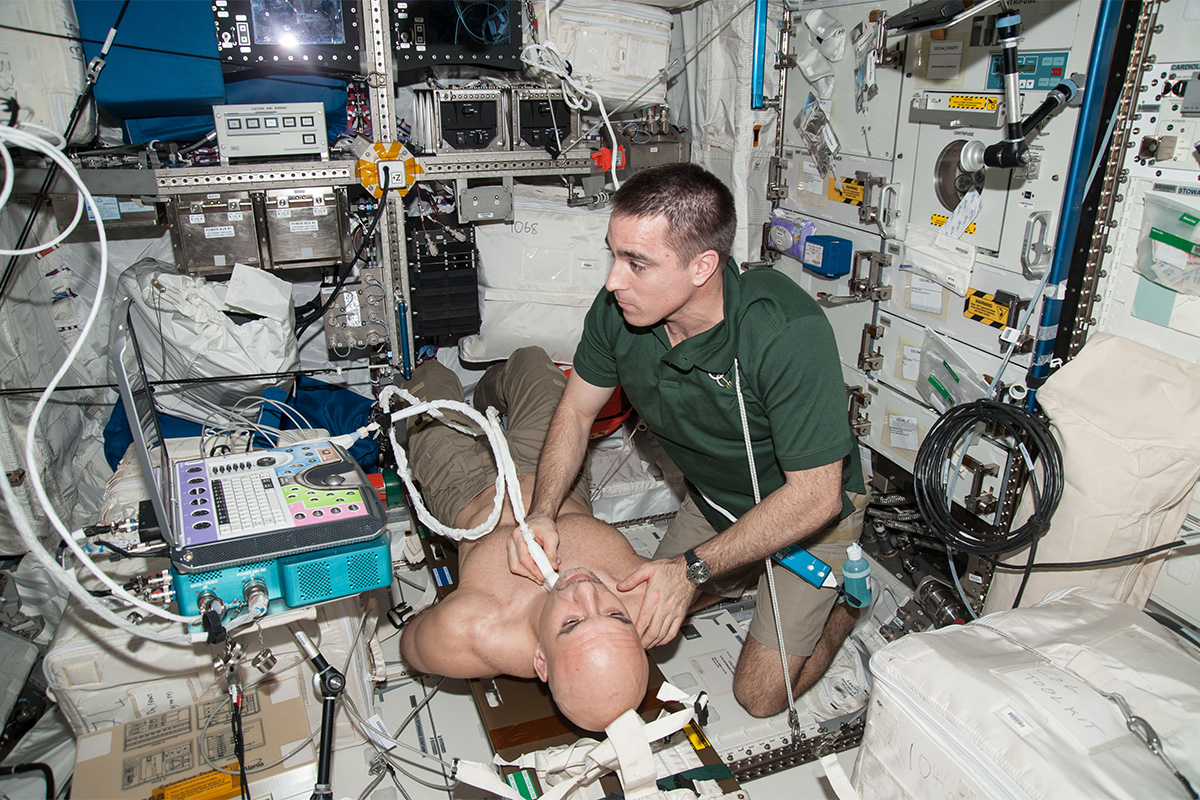 NASA
NASA
"Someone actually calculated the door-to-balloon time should an astronaut on the International Space Station have a coronary event. The best possible scenario was 28 hours," Budoff told Cardiology.
This plan required launching a "rescue" vehicle from Earth to dock with the ISS, returning it and landing it in some remote area of Eastern Europe and then transporting the patient to Frankfurt, Germany for treatment.
Thankfully, there have been no acute coronary or cerebrovascular events in space, although there have been reports of nonsustained ventricular tachycardia.5
"We think that at least one of the Russian cosmonauts had to come down because of possible AFib. But what we've seen is that people who have arrhythmias before flight tend to have them in flight.
This has nothing to do with space and everything to do with cardiovascular disease in middle-aged men and women," says Levine. Still, he's yet to document an episode of AFib in space; all logged episodes of AFib in astronauts have occurred on the ground.
But as missions get longer and go farther (like to Mars, for example), the chances of an event happening are increased.
"I would be unhappy if an astronaut developed AFib in space. What if, for example, you don't have adequate rate control? To be honest, we don't really know what AFib in space looks like," says Levine.
CVD, CV Mortality and Deep Space
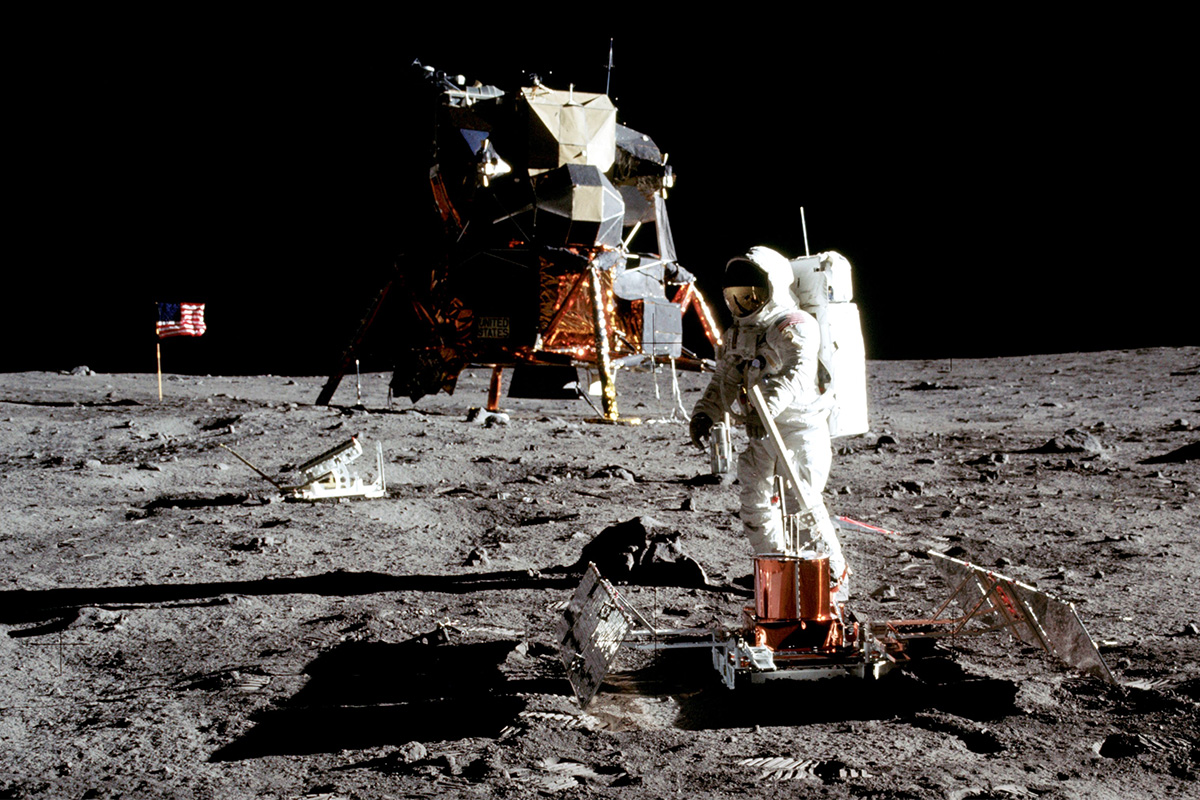 NASA
NASA
On July 16, 1969, Apollo 11 launched from Cape Kennedy carrying Commander Neil Armstrong, Command Module Pilot Michael Collins and Lunar Module Pilot Edwin "Buzz" Aldrin. Armstrong and Aldrin ultimately spent 21 hours, 36 minutes on the moon's surface. Collins remained in lunar orbit in the Command Module Columbia.
Armstrong died at 82 from complications after coronary artery bypass surgery. Collins and Aldrin are still alive.
In total, Apollo flew six missions that sent 24 men into deep space and allowed 12 of them to walk on the moon. Then, in 2016, a study suggested that the cardiovascular death rate for astronauts who flew on a moon mission might be four- or five-times that of astronauts who only flew in LEO or who qualified for the Astronaut Core but never flew.6
"That study was completely flawed. For one, it didn't control for any risk factors, so we had no knowledge of what these guys did when they were younger in terms of smoking or physical activity," notes Levine.
Turns out the researchers also reported only proportional mortality ratios, for which the required assumptions and conditions were not met.7,8
"We're talking about a one-week trip to the moon. It's just nonsense to think it had such long-lasting consequences," says Levine.
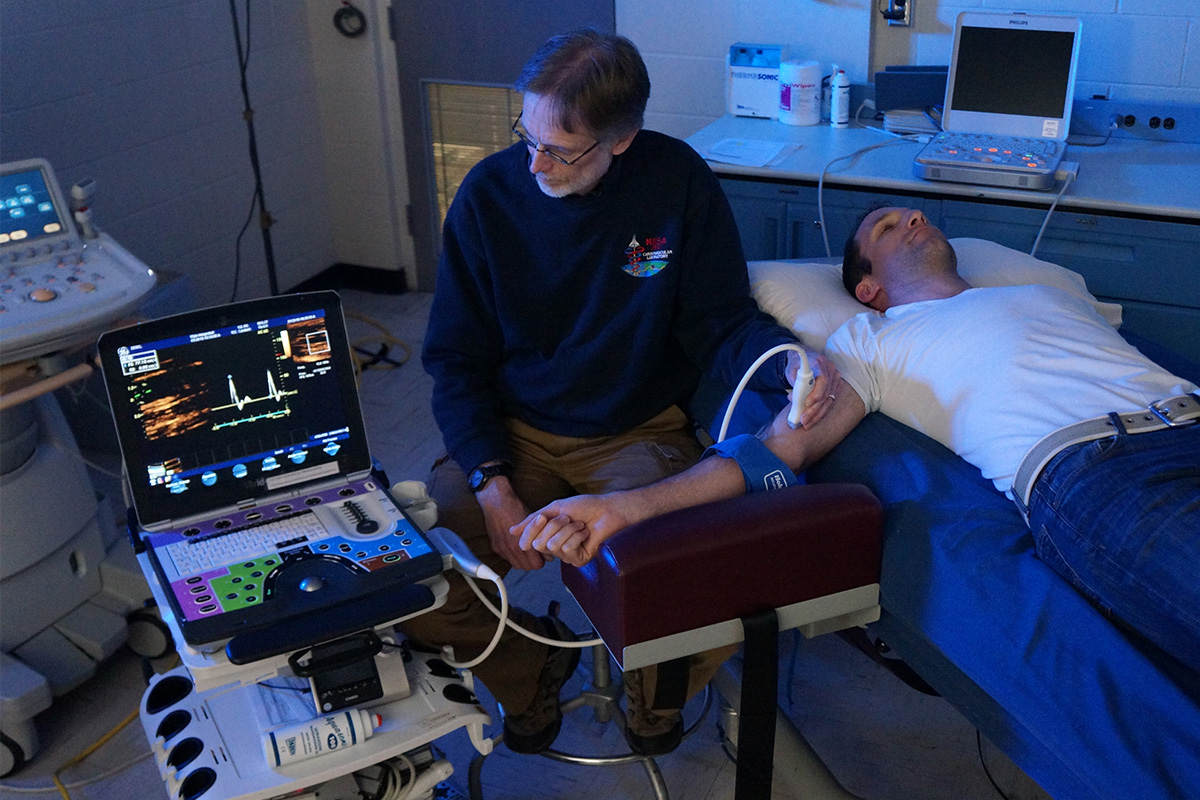 NASA
NASA
A subsequent much larger study showed no increased risk of adverse cardiovascular events in 310 NASA astronauts compared with 981 age-, sex- and BMI-matched nonastronaut NASA employees, either before or after adjustment for traditional risk factors.9
There was also no difference in cardiovascular disease risk between astronauts with and without spaceflight experience.
A more recent study showed no increase in standardized mortality rates for cardiovascular disease or for that matter for all cancer.8 On the contrary, the investigators found a "healthy worker" effect in this highly selected group, notwithstanding a higher accident mortality rate.
In an attempt to control for a healthy worker effect, Roberts and Day compared mortality rates of male U.S. astronauts with those of professional athletes from Major League Baseball and the National Basketball Association between January 1, 1960 and May 31, 2018.10
Both the athletes and astronauts had significantly lower-than-expected mortality in comparison with the general population, with no differences in all-cause mortality rates between groups.
"There's no evidence as yet with relatively short duration exposures, that there is an increased the risk of early cardiovascular mortality, but there are really qualified people still working to nail this down, particularly as we consider longer trips to space," says Levine.
CV Study of Long-Term Spaceflight
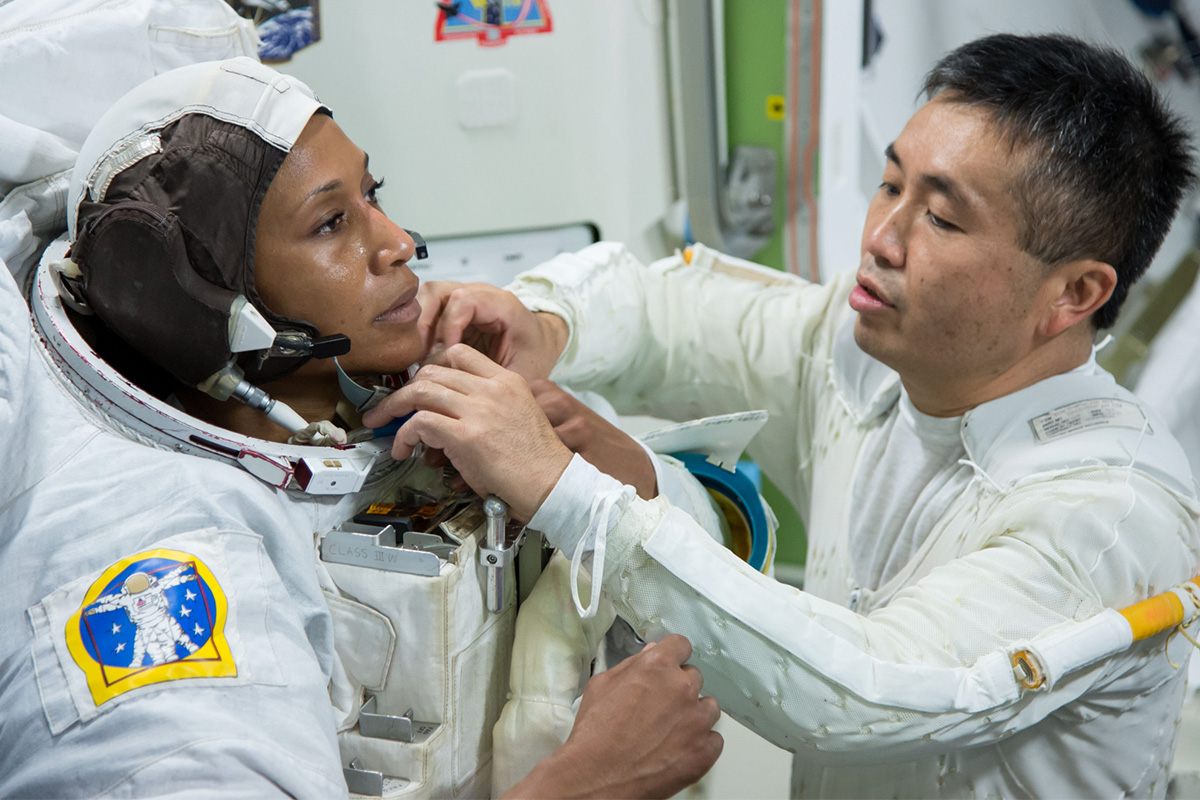 NASA
NASA
With some evidence showing that space dwelling speeds up atherosclerosis progression and the onset of AFib, all bets are off when space travel transitions to longer voyages that go far beyond LEO.
"The future of manned space flight is exploration-class missions and we'll begin to establish bases on the moon. It could happen toward the end of this decade, middle of next decade, where we will drop people on the moon and they'll spend progressively longer amounts of time there," says Levine.
"My two biggest concerns with that are the effects of microgravity and radiation on the human heart in terms of acceleration of atherosclerosis and the increased risk of AFib," he adds.
Related to that, of course, are what countermeasures can be taken to modulate that risk.
Levine and Budoff are central figures in a new NASA effort to determine the impact on astronaut health and performance of long-duration space missions.
This extensive series of studies will determine the effect of progressive durations of spaceflight on cardiovascular structure and function, and identify biomarkers that may be useful for early detection of accelerated atherosclerosis.
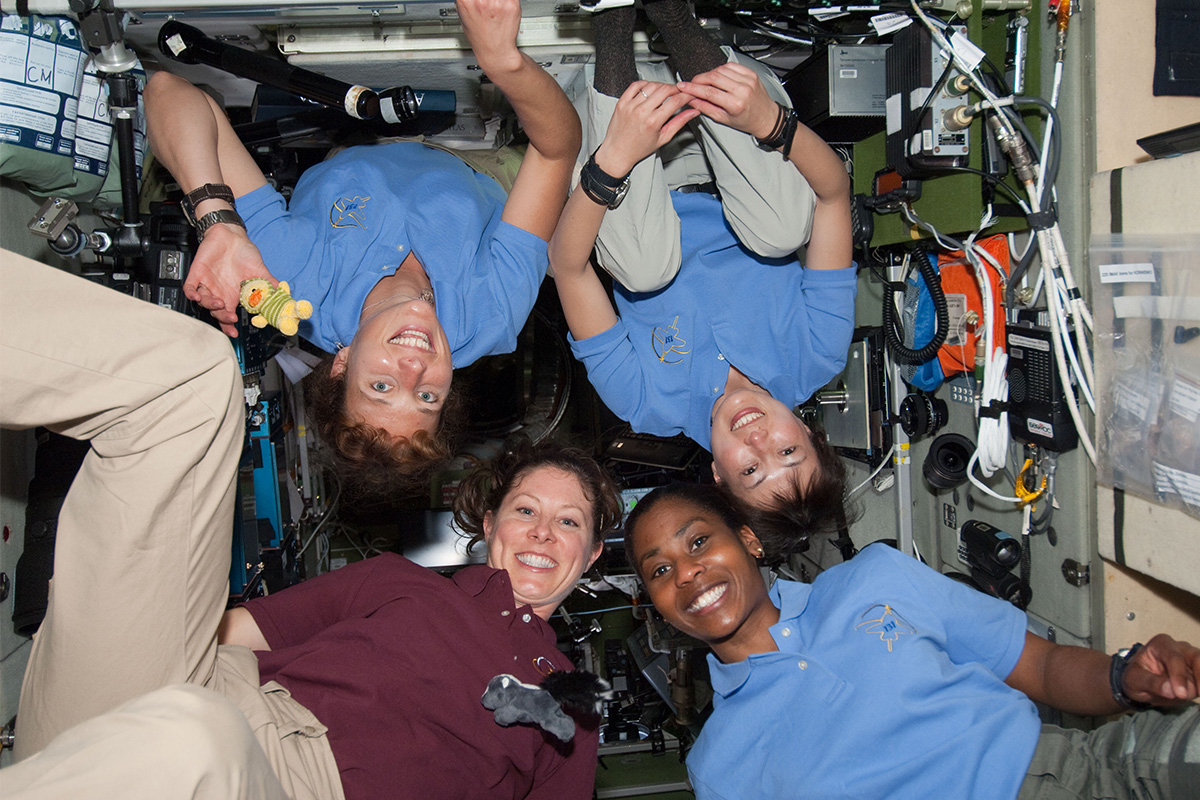 NASA
NASA
The research projects will use future missions of varying lengths to help NASA establish temporal profiles of human physiological, behavioral and psychological variables of importance for the maintenance of human health and performance during future long-duration deep space missions.
As an example, for one of the studies the researchers will perform coronary CT angiography on crew members one year before flight; four to eight weeks prior to takeoff; soon after flights lasting two, six and 12 months duration; and after one year of recovery.
This will allow them to compare the trajectory of coronary atherosclerosis before and after prolonged spaceflight. They will also be testing the impact of longer-duration flights on left atrial size and test the hypothesis that one year in space increases AFib burden.
"I think it will be very interesting to get some answer for our astronauts who are going to take us to the next frontier, wherever that might be," says Budoff.
References
- Brook RD, Weder AB, Rajagopalan S. Environmental hypertensionology: the effects of environmental factors on blood pressure in clinical practice and research. J Clin Hypertens Greenwich Conn 2011;13:836-42.
- May C, Borowski A, Martin D, et al. Affect of microgravity on cardiac shape: comparison of pre- and in-flight data to mathematical modeling. J Am Coll Cardiol 2014;63:A1096.
- Khine HW, Steding-Ehrenborg K, Hastings JL, et al. Effects of prolonged spaceflight on atrial size, atrial electrophysiology, and risk of atrial fibrillation. Circ Arrhythm Electrophysiol 2018;11:e005959.
- Khera A, Budoff MJ, O'Donnell CJ, et al. Astronaut cardiovascular health and risk modification (Astro-CHARM) coronary calcium atherosclerotic cardiovascular disease risk calculator. Circulation 2018;138:1819-27.
- Fritsch-Yelle JM, Leuenberger UA, D'Aunno DS, et al. An episode of ventricular tachycardia during long-duration spaceflight. Am J Cardiol 1998;81:1391-92.
- Delp MD, Charvat JM, Limoli CL, Globus RK, Ghosh P. Apollo lunar astronauts show higher cardiovascular disease mortality: possible deep space radiation effects on the vascular endothelium. Sci Rep 2016;6:29901.
- Hughson RL, Helm A, Durante M. Heart in space: effect of the extraterrestrial environment on the cardiovascular system. Nat Rev Cardiol 2018;15:167-80.
- Elgart SR, Little MP, Chappell LJ, et al. Radiation exposure and mortality from cardiovascular disease and cancer in early NASA astronauts. Sci Rep 2018;8:8480.
- Ade CJ, Broxterman RM, Charvat JM, Barstow TJ. Incidence rate of cardiovascular disease end points in the National Aeronautics and Space Administration Astronaut Corps. J Am Heart Assoc 2017;6(8).
- Reynolds RJ, Day SM. Mortality of US astronauts: comparisons with professional athletes. Occup Environ Med 2019;76:114-7.
Clinical Topics: Acute Coronary Syndromes, Congenital Heart Disease and Pediatric Cardiology, Diabetes and Cardiometabolic Disease, Heart Failure and Cardiomyopathies, Prevention, Pulmonary Hypertension and Venous Thromboembolism, Sports and Exercise Cardiology, Vascular Medicine, Congenital Heart Disease, CHD and Pediatrics and Arrhythmias, CHD and Pediatrics and Prevention, Pulmonary Hypertension, Hypertension, Sports and Exercise and Congenital Heart Disease and Pediatric Cardiology
Keywords: ACC Publications, Cardiology Magazine, United States National Aeronautics and Space Administration, Acute Coronary Syndrome, Sports, Aneurysm, Hypertension, Pulmonary, Secondary Prevention, Heart Defects, Congenital, Metabolic Syndrome, Inventions
< Back to Listings


